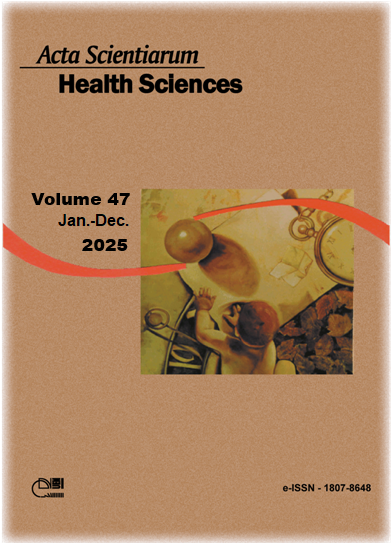Combined effects of dry needling and strain counter strain technique in myofascial trigger points of upper trapezius
Resumo
The aim of the study was to evaluate the combined effects of dry needling and strain counter strain in myofascial trigger points of upper trapezius. A randomized control trial was conducted in physiotherapy department of Mayo Hospital, Lahore, Pakistan between July and September 2020. Patients had rigid band, local tenderness, referred pain, localized twitch response and jump sign, both gender male and female, age 20-40 years, the presence of active symptomatic trigger points in upper trapezius, pain presented in the cervical and occipital region were included. Total 28 patients which had been divided into two groups by randomization (study group & control group). Interventions/data collection tools; conventional physiotherapy in study group-A (n = 14) and strain counter strain only with baseline treatment in control group-B (n = 14). Patients were treated in the span of 8 weeks (2 treatment sessions/0-2 week then 1 treatment session/2-4 week and baseline treatment session/4-8 week). The data was collected using VAS, goniometer and neck disability index questionnaire. The mean age of 25.65 ± 4.05 years in group-A and 20.55 ± 3.25 in group-B. At the end of treatment, the mean pain score was 1.07 ± 0.27 for study group and 1.86 ± 3.63 for control group (p ≤ 0.05). The mean of neck disability index score was 1.79 ± 0.58 for study group and 2.64 ± 0.50 for control group (p ≤ 0.05). The mean of cervical right lateral flexion was 35.93 ± 3.81 for study group and 30.79 ± 3.24 for control group (p ≤ 0.05). The study concluded that combined technique of dry needling and strain counter strain is effective in trigger point’s reduction, pain improvement and also improved ranges of motion.
Downloads
DECLARAÇÃO DE ORIGINALIDADE E DIREITOS AUTORAIS
Declaro que o presente artigo é original, não tendo sido submetido à publicação em qualquer outro periódico nacional ou internacional, quer seja em parte ou em sua totalidade.
Os direitos autorais pertencem exclusivamente aos autores. Os direitos de licenciamento utilizados pelo periódico é a licença Creative Commons Attribution 4.0 (CC BY 4.0): são permitidos o acompartilhamento (cópia e distribuição do material em qualqer meio ou formato) e adaptação (remix, transformação e criação de material a partir do conteúdo assim licenciado para quaisquer fins, inclusive comerciais.
Recomenda-se a leitura desse link para maiores informações sobre o tema: fornecimento de créditos e referências de forma correta, entre outros detalhes cruciais para uso adequado do material licenciado.























5.png)







